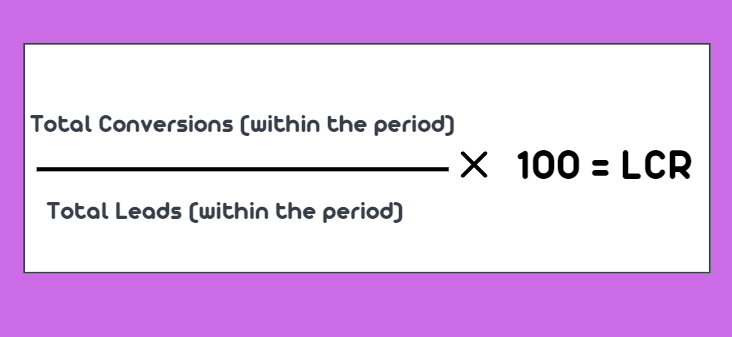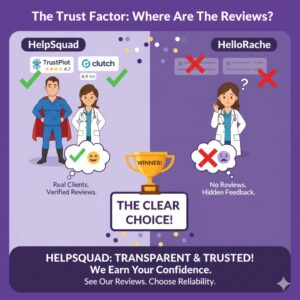Sales & Lead Conversion
17 Apr 2024 By: Mary Dellosa
Updated
Lead conversion in sales is paramount for achieving business success. Any enterprise wishing to increase sales must learn the best practices for converting leads into customers. Here’s a simple breakdown of what lead conversion means.

Understanding the Basics of Lead Conversion
What is Lead Conversion?
Lead conversion is a process where an initial prospect turns into a paying customer. This is an important time when customers who are interested in a product or a service decide about buying it. This strategic period is important for the sales teams given the fact that it significantly affects the impact of the revenue target.
Effective lead conversion is truly all about building these authentic, heart felt connections with your target buyers. Through seeing the specific conditions and problems they encounter, giving each one of them corresponding solutions can form a bond which is personalized. This technique should contain individualized interactions, quick responses, and through and through understanding of customer journey. These connections are not only getting leads but also build lasting relationships.
What is the Importance of Lead Conversion in Sales?
Lead conversion is one of the keys to business success. With weak conversion strategies in place, businesses may find it hard to move on and to achieve its financial goals. However, lead generation alone isn’t enough. The secret is to nurture those leads and turn them into real sales. This step is essential for a business to thrive and succeed.
Lead conversion is all about sustainability than just closing a deal; it’s about building relationships that will last, maintaining customer loyalty, and inspiring the customers to be advocates of your brand. Not only does a high conversion rate drive up the revenue; it also creates a stable base for your business and referrals, which in the long run, guarantees future growth for your company.
Strategies for Effective Lead Conversion
How to Identify Potential Leads?
First, it is important to know your potential customers well in order to achieve a successful lead conversion. By that, we mean collecting a detailed market research and setting up a focused lead generation approach. If you focus on finding out who your audience is and concentrate on the most promising prospects, your probability of turning those chances into happy customers significantly increases.
Market research will help identify possible leads. Valuable insights about what your target clients actually want are gained through hard work on the market trends, consumers’ behavior analysis, and strict observation of your competitors. To make your study dependable and reflective, a sample size calculator will be one of the useful tools that will help you decide how many replies to collect for the data to be accurate. With such knowledge, you could then change your lead generation strategies in a way that would attract prospects who would have a higher chance of becoming permanent customers.
Engaging and Nurturing Leads
Identify your leads and work to connect with them in a mindful and persistent manner. Provide the exact content value that fits them individually, immediately solve their problems, and emphasize the foundation of trust. What you need to do is continuously delivering information and solutions that they can truly connect with them and do that you will be able to validate their interest in your brand.
“If you are not taking care of your customer, your competitor will”
Bob Hooey
Connecting with leads through email, social media, webinars, and personalized messages will help you to establish relationships as well as keep your brand within view. Nurturing the leads positions them to reach the bottom of the sales funnel where they make a purchase decision by offering precisely what they need. When you develop a strong rapport, you have a higher possibility of converting them into lifetime customers.
The Sales Process and Lead Conversion
The Role of Sales in Lead Conversion
Converting leads to customers is the main purpose of the sales team. They fill this void by interacting with customers, finding out their needs, and showing exactly how your product/service can be used to address those exact problems. However, by skillfully presenting your services and eliminating any doubts, they lead the way of potential buyers to a purchase.
The ability of sales team to network is a key component if a company desires to smoothly put leads through the sales funnel. Through building trust and fostering friendly interactions, the conversions will rise significantly. They show the true value of sales reps that are willing to spend the time to explain how they can improve the specific problems of their clients. Such one-on-one interaction during the sales process yields an impression of a more genuine approach that consequently increases the probability of making a sale.
Trending now
Determining a healthy sales conversion rate can be perplexing since it depends on several factors like the sales process and the buyer. The rates may differ significantly, from 2% to 40%, depending on the industry and sales method. In the case of e-commerce, transactions can be instantaneous whereas Business-to-Business transactions may need several communication exchanges before reaching an agreement. To determine the best practice for your company, first, you need to measure the impact of your current operations by using your historical data for establishing a baseline, and then analyze how the changes affect your company’s conversion rates.
Approximately 2.35% is the average conversion rate from sales in 2023, however, what is regarded as a good rate diverges greatly depending on the industry and the specifics of the sales funnel. To illustrate, online retailers usually go through a completely different experience than B2B companies. Techniques like digital advertising and email marketing are particularly useful. The conversion rate elevation should focus on facilitating the deep understanding of customers, providing the great customer service, and utilizing the live communication tools such as chatbots for better engagement, all at once.
Aligning Sales and Marketing for Better Conversion
The joint efforts of both the sales and marketing teams play an essential part in lead conversion. The cooperation provides customers with a smooth interaction, ensuring that all communications are clear and the brand voice is consistent. This partnership is important for lead conversion, which includes each step of communication process.
At times sales and marketing departments collaborate to determine the best ways to increase the conversion of potential clients. They exchange customer data which facilitates them in fine-tuning their interaction models. This engagement helps in strengthening the lead nurturing efforts and also increases the lead conversion rates.
Measuring Lead Conversion Success
What are the Key Metrics for Lead Conversion?
Tracking lead conversion success is essential for refining your strategies. Key metrics like conversion rate and customer lifetime value help identify improvement areas and ensure your decisions are data-driven. This focus enhances your results.
Although it is necessary to observe the lead-to-opportunity conversion rate, focusing solely on it may not be the solution. Lead to close ratio implies the ratio of leads converted to opportunities, breaking down the quality of lead and the performance of lead nurturing techniques. Knowing this makes it easier to identify where your weak points are and figure out how to fix them in order to make your conversion processes more effective.
How to Calculate Lead Conversion Rate?
To calculate your lead conversion rate (LCR), simply divide the number of converted leads by the total leads for the same period, then multiply by 100.

Interpreting Conversion Data
Analyzing data is the key for knowing the performance indicators. By learning the dynamics and patterns, you discover the consumers’ behaviors and desires. The information gives you enough ground to sharpen your conversion strategies as it enables you to adjust them to the demands of your target audience. This not only increases the conversion rate but also helps in the growth and retention of customers.
It is necessary to carry out conversion analysis for various channels like email, social media and paid ads. Through this, you are able to effectively allocate the advertising budget. This strategy, in turn, guarantees you attain the most ROI possible and that the effect of your marketing efforts is significantly optimized.
Improving Your Lead Conversion Rate
An easy and nice value proposition is the first thing that leads to the conversion rate increase. It is very important to tell the customer’s benefits of your product or service clearly and to show them why it is the best choice for them. Such clear communication allows the customers to recognize the one and only advantages of using your product or service instead of going for the competition.
If you want to have a really large surge in lead conversion rate, besides having an attractive value proposition, make it super easy for clients from the beginning to the end. Use every possible way to invite leads to act, no matter if they are buying, getting a demo, or simply asking for more info. By clearing their way of any obstacles, you are making it much more likely that they will go through with that action and turn into customers.
Excellent customer service is the main factor that is working in favor of lead conversion. By providing tailor-made assistance, fast issue resolution, and surprising clients with service that goes beyond their expectations, you are making a negative experience that turns people off and breaks their trust easy to convert and long-lasting. This implanted security is vital for creating customer retention and even more trust, which in turn would help to spread out the word about the business and thus to grow in the long run.
Best Practices for Lead Conversion
Boosting your lead conversion rate involves a few key practices: a simple and effective solution is to convey clear and attractive value proposition, make purchasing easy, and ensure excellent customer service. what you can do to achieve that is to keep on delivering the customers a great and positive experience that will increase the likelihood of conversion.

Common Pitfalls and How to Avoid Them
Your choice of strategies will determine the outcome of leveraging such opportunities to the maximum and, at the same time, not falling into the traps of late replies, unresolved complaints, and customers not getting their desired experience. The application of this method not only improves your brand’s reputation but also boosts the chances of your prospects turning into loyal customers for life.
The comprehension of lead conversion basics, the acceptance of smart ways, the alignment of your sales and marketing teams, and the continuous improvement of your efforts are the steps that convert more Leads and eventually increase the size of the business. This dedication not only strengthens your brand but also ensures its survival in the long run.
Will you take the plunge to transform your lead conversion process and upgrade your customer experience? HelpSquad BPO is here for you with its dedicated virtual assistants and a customer support team that is available 24/7 to make your success happen. Your leads will be looked after by professional, bilingual agents who are available for as little as $8.50 per hour and we will help you reach your sales targets. Do not let the usual hurdles hold you back. Start a trial with HelpSquad BPO today and boost your efficiency with our professional outsourcing services.
What is lead conversion in sales?
Lead conversion is one of the major processes in sales where a lead (an interested prospect) is transformed into a customer with a payment. It is the point when a person changes from “just looking” to really purchasing your product or service. Good lead conversion indicates that you are not only gaining interest, but also converting that interest into actual revenue.
Why is lead conversion so important for business success?
Lead generation that has no conversion is just mist. Lead conversion is the actual process that brings marketing efforts to money. A powerful conversion strategy not only increases sales but also enhances the return on ad spend, and sales pipeline becomes more predictable. In the end, good conversion closes not only the deals but also the customer relationships, with loyal customers and brand advocates created from which the referrals then flow and, in this way, become the reason for long-term growth.
What are the ways I can find out the best leads that have the most potential and should be my main focus?
To begin with, do thorough market research. Commence with the conclusion: identify your target consumers, understand their problems and know their purchase decisions making process. To get accurate information one might utilize methods like surveys, analytics and even sample size calculator. Then, segments the leads according to their fit (industry, price, need, timing) and the level of interaction (opens, clicks, replies, site behavior) so that your sales team can target the most probable customers.
What methods are the most effective in nurturing the leads before they become ready to buy?
Lead nurturing is merely providing assistance via helpful and continuous communication. Therefore, the mentioned ways are: Specific e-mails that target pain points of prospects. Social media content and webinars sharing things that are useful. Communication that is personalized or based on past interactions. Providing answers to questions fast and in a straightforward manner. When prospects perceive that their needs are taken care of and they are supported, then they will be more inclined to progressively go through the funnel and pick you as the one to sell to when they are ready.
In what way does the sales team contribute to lead conversion that is effective?
Sales is the link between interest and decision. A team with strong sales: Discovery each lead’s actual needs and priorities. Illustrates precisely how your solution meets those problems. Clarifies and empathizes with objections and questions. Assists leads through the buying process step-by-step. When reps win trust, and concentrate on aiding rather than “closing,” both conversion rates and customer satisfaction rise.


